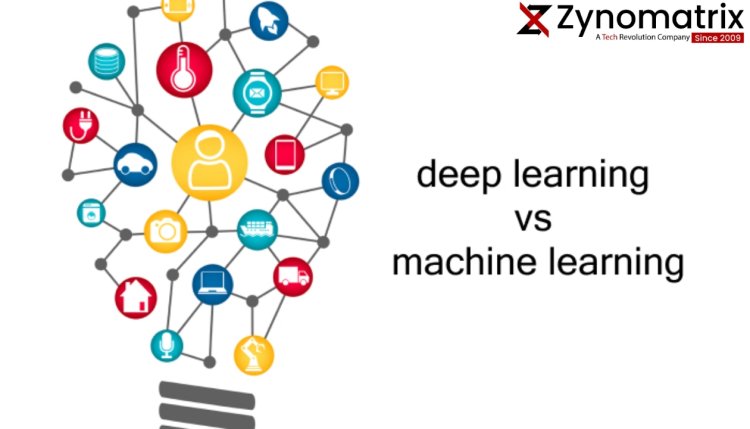"Deep Learning vs. Machine Learning: Understanding the Differences"
Explore the intricacies of artificial intelligence with our informative blog post, "Deep Learning vs. Machine Learning: Understanding the Differences." Delve into the realms of these two essential AI approaches to gain a comprehensive understanding of their unique characteristics, applications, and implications for modern technology. Uncover the fundamental concepts behind machine learning, where algorithms empower computers to learn from data and improve their performance autonomously. We'll dissect supervised, unsupervised, and reinforcement learning, offering insights into their diverse applications across industries.

Introduction
In the world of artificial intelligence, two terms often come up: "Deep Learning" and "Machine Learning." While they both fall under the umbrella of AI, they represent distinct approaches to solving problems. In this blog post, we'll explore the differences between deep learning and machine learning, shedding light on their unique characteristics, use cases, and how they contribute to the advancement of AI technologies.
Machine Learning: A Foundation
Machine learning is a subset of artificial intelligence that focuses on enabling computers to learn from data and improve their performance over time without being explicitly programmed. It relies on algorithms that can detect patterns, make predictions, and provide insights based on training data. Supervised, unsupervised, and reinforcement learning are the main categories of machine learning, each serving specific purposes.
Deep Learning: Unleashing Neural Networks
Deep learning, on the other hand, is a subfield of machine learning that has gained significant attention in recent years. It revolves around neural networks, computational models inspired by the human brain's interconnected neurons. Deep learning excels at handling large volumes of complex data, such as images, audio, and text, by utilizing intricate architectures known as deep neural networks. Convolutional neural networks (CNNs) for image recognition and recurrent neural networks (RNNs) for sequence data are examples of deep learning architectures.
Architecture and Complexity
Architecture is a major differentiator between machine learning and deep learning. While machine learning algorithms often involve feature extraction and selection, deep learning algorithms automatically learn hierarchical features from the data. Deep learning's complex neural network structures enable it to automatically learn intricate patterns that might be challenging for traditional machine learning models to discern.
Feature Engineering vs. End-to-End Learning
A key distinction lies in feature engineering. In traditional machine learning, experts often need to manually engineer relevant features for the model to learn from. Deep learning, however, adopts an end-to-end learning approach, where the model learns both the features and the relationships within the data. This can lead to more accurate and efficient models, as the burden of feature engineering is alleviated.
Data Requirements and Scaling
Deep learning models typically require large amounts of labeled data for effective training. This data hunger can be both an advantage and a challenge. While it allows deep learning models to excel at tasks like image and speech recognition, obtaining and labeling such extensive datasets can be resource-intensive. Machine learning algorithms can sometimes achieve competitive results with less data, making them suitable for scenarios with limited labeled examples.
Use Cases and Applications
Machine learning finds applications in a wide range of fields, from healthcare and finance to recommendation systems and fraud detection. Deep learning, with its prowess in handling complex data types, has made breakthroughs in image and speech recognition, natural language processing, and autonomous vehicles.
Computational Requirements
Deep learning's power comes at a computational cost. Training deep neural networks requires substantial processing power and memory resources, often necessitating the use of GPUs or specialized hardware. Machine learning algorithms, while still computationally demanding in some cases, might be more feasible for scenarios with limited resources.
Interpretable vs. Black Box Models
Another significant contrast is the interpretability of models. Machine learning models tend to be more interpretable, making it easier to understand how they arrive at their predictions. Deep learning models, due to their complexity, can be perceived as "black boxes," making it challenging to explain their decisions comprehensively.
What's Your Reaction?





















